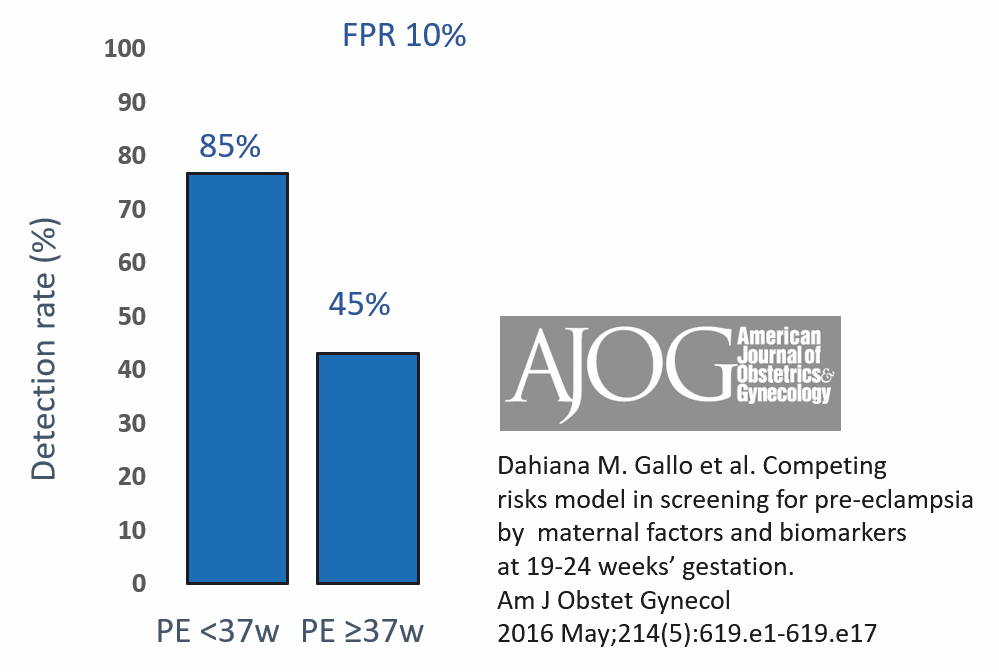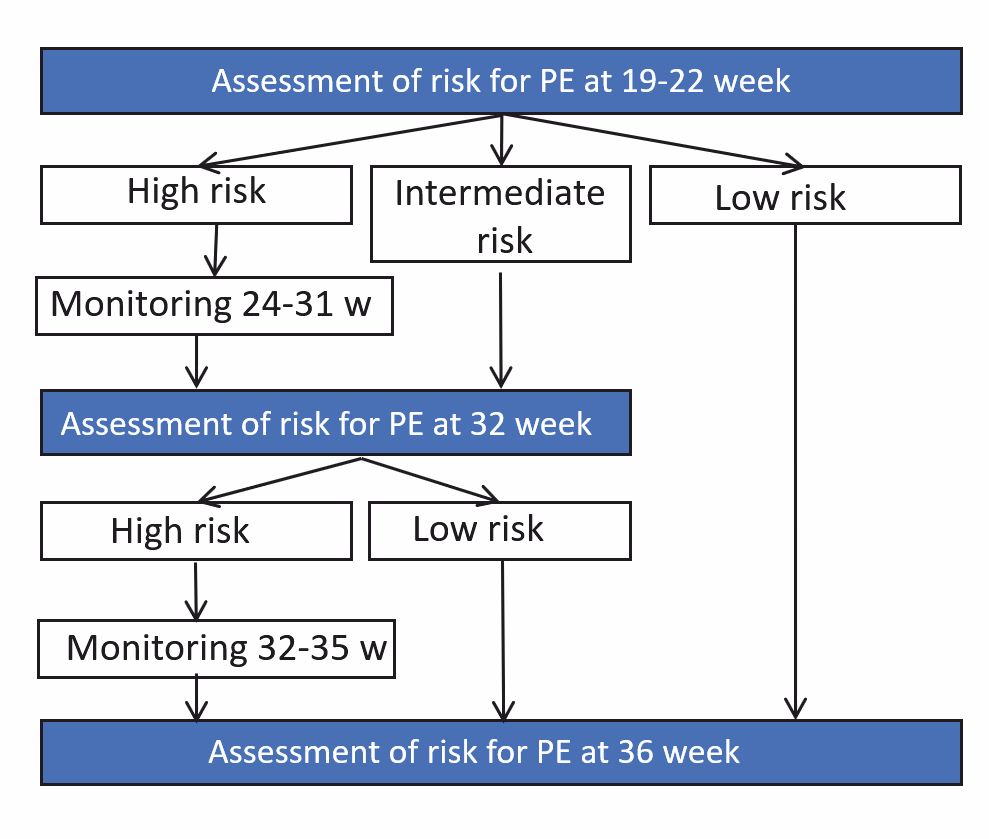Preeclampsia screening in the 19th-22nd gestational week

It is possible to reassess the risk of preeclampsia obtained during the I. trimester screening and to assess the efficacy of the prophylactic aspirin therapy during the II. trimester preeclampsia screening. During the foetal anatomical screening in the II. trimester, it is possible to accurately identify 85% of women at risk who may develop early preeclampsia before the 37th week, and women who develop preeclampsia after the 37th week with 45% accuracy.

The discovery of women in the risk group of early preeclampsia in the second trimester during the foetal anatomical screening is very important, since the intensive monitoring of a mother and foetus allows the timely detection of symptoms of the condition and the associated foetal intrauterine growth retardation. This provides an opportunity to start the anti-hypertensive treatment at the right time and schedule a delivery, thus preventing severe complications.
- High-risk group. This group consists of women who, as a result of the screening, had a risk of preeclampsia before the 32nd week of pregnancy greater than 1:100. The group consists of 1% of women who participated in the study and 95% of them develop preeclampsia before the 32nd week of pregnancy. These women are regularly monitored by a doctor, measuring arterial blood pressure and performing urine analysis for the determination of protein. For women who experienced foetal growth retardation or developed hypertension during the 20th week of pregnancy, an ultrasonic examination is performed at regular intervals to evaluate the foetal growth and status of wellbeing.
- Medium-risk group. This group consists of women who, as a result of the screening, had a risk of preeclampsia before the 32nd week of pregnancy between 1:100 and 1:300. The group, together with women in a high-risk group, consists of less than 20% of participants in the study and among them there are more than 90% of women who develop preeclampsia between the 32nd and 36th week of pregnancy. They are suggested to undergo a reassessment of the risk during the 32nd week of pregnancy.
- Low-risk group. This group consists of women who, as a result of the screening, had a risk of preeclampsia before the 32nd week of pregnancy less than 1:300. The group consists of 80% of women who participated in the study and these women become reassured that preeclampsia before the 36th week of pregnancy is very unlikely. However, they are suggested to undergo a reassessment of the risk during the 36th week, as it is possible to more precisely assess late preeclampsia that occurs after the 37th week of pregnancy.

Read more:
- What is preeclampsia?
- Preeclampsia screening in the 11th-14th gestational week
- Preeclampsia screening in the 35th-37th gestational week
- Preeklampsia screening patient leaflet
- Risk calculator for preeclampsia
